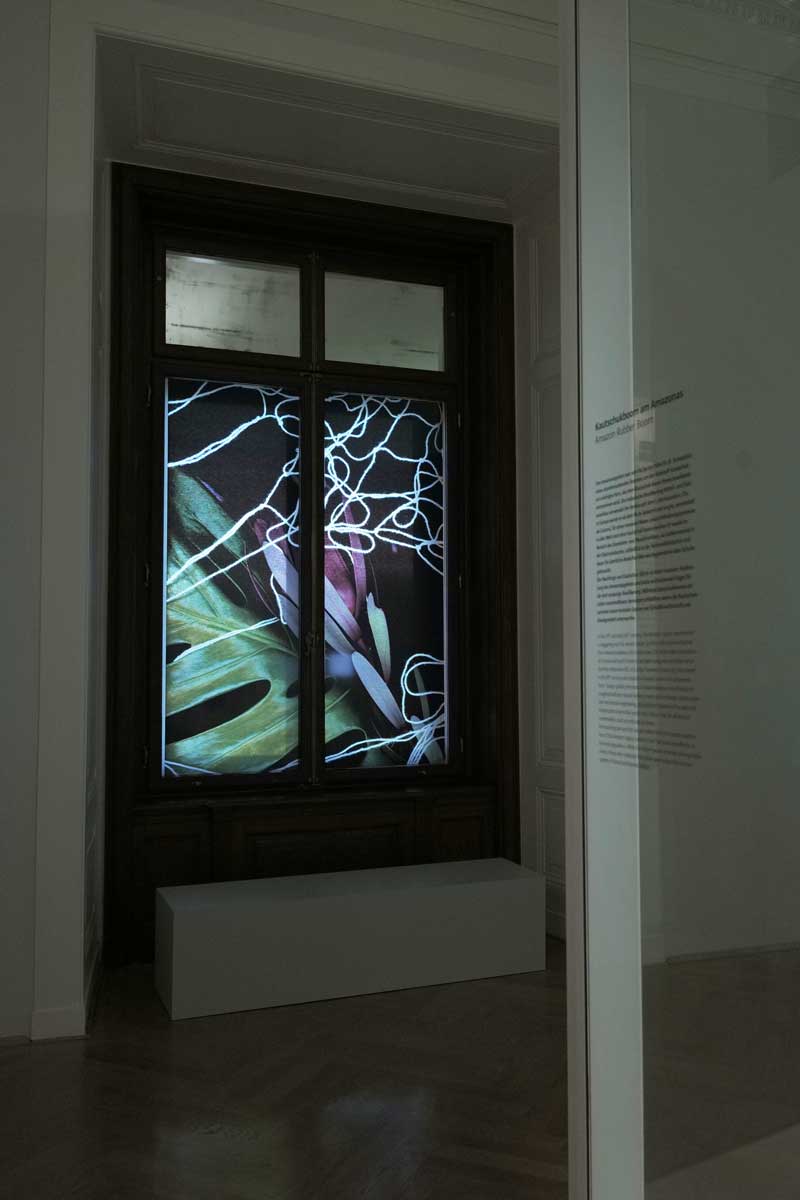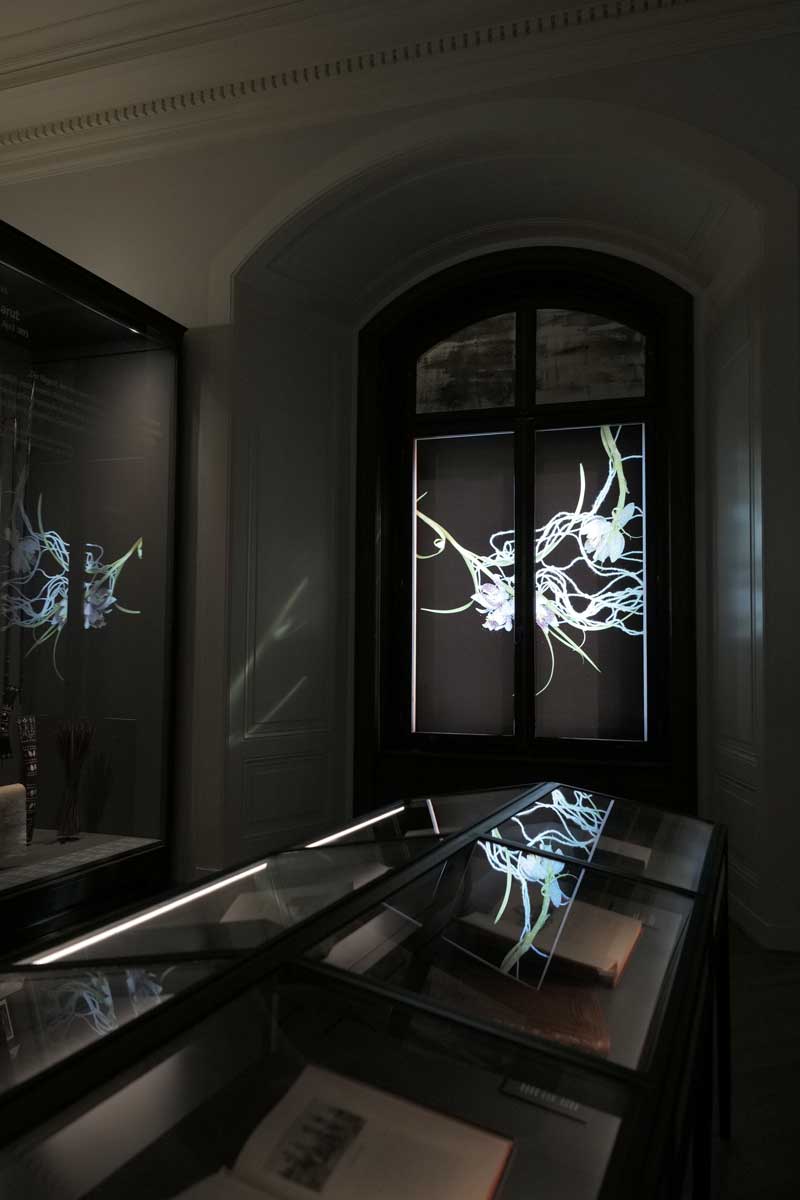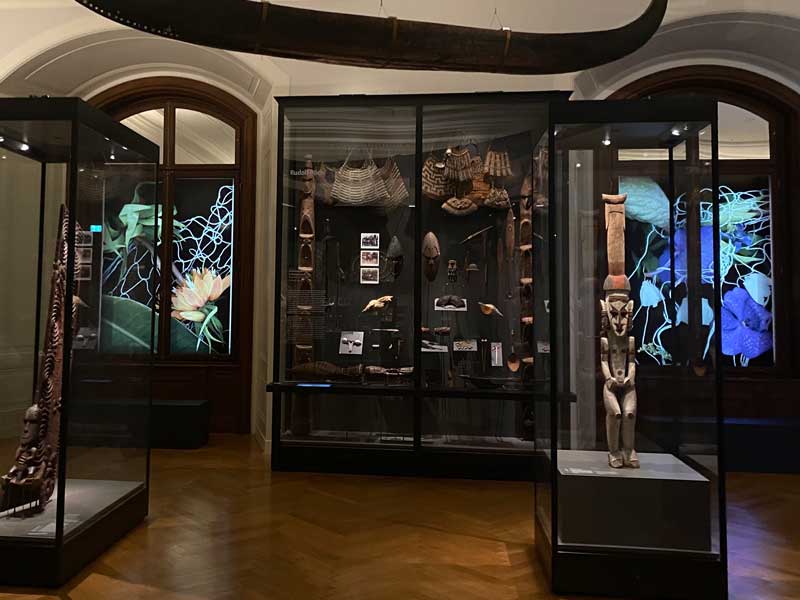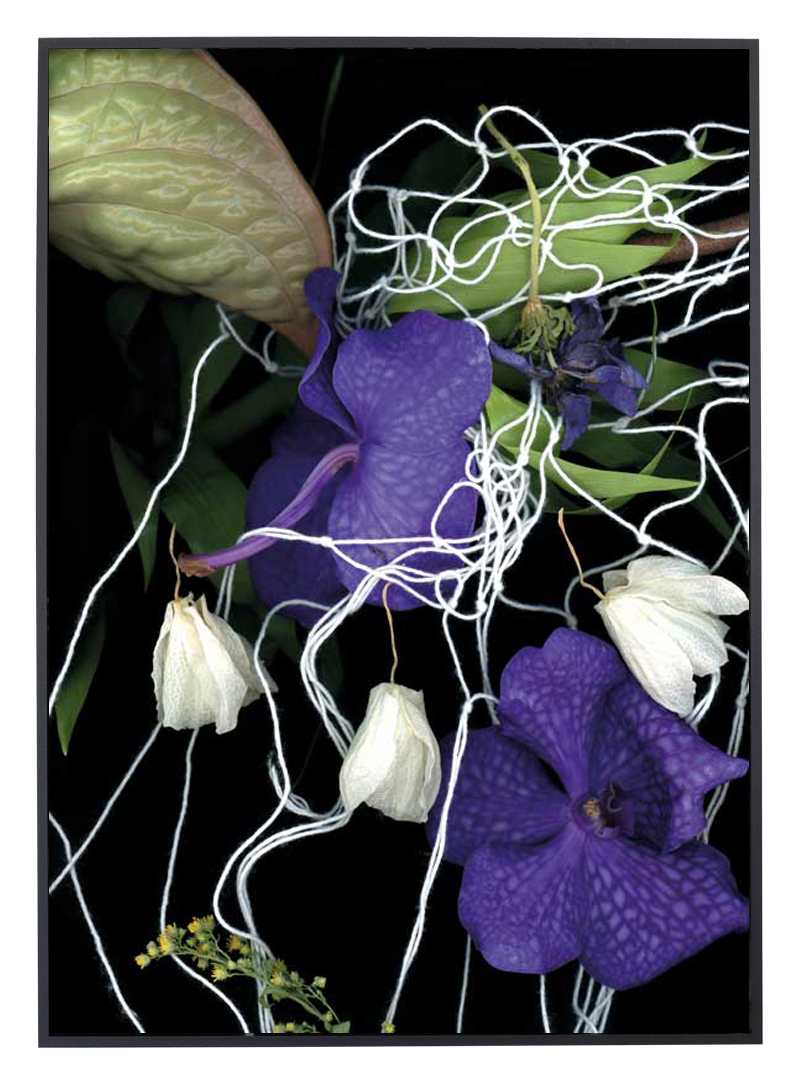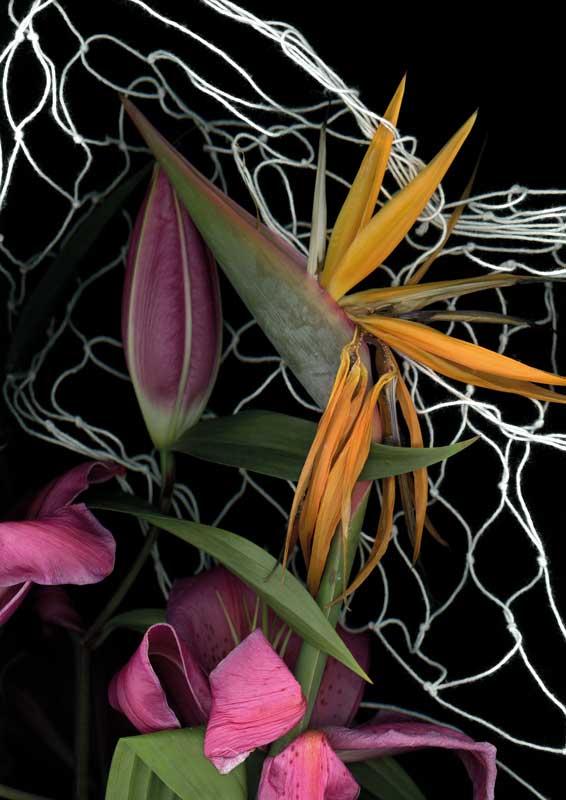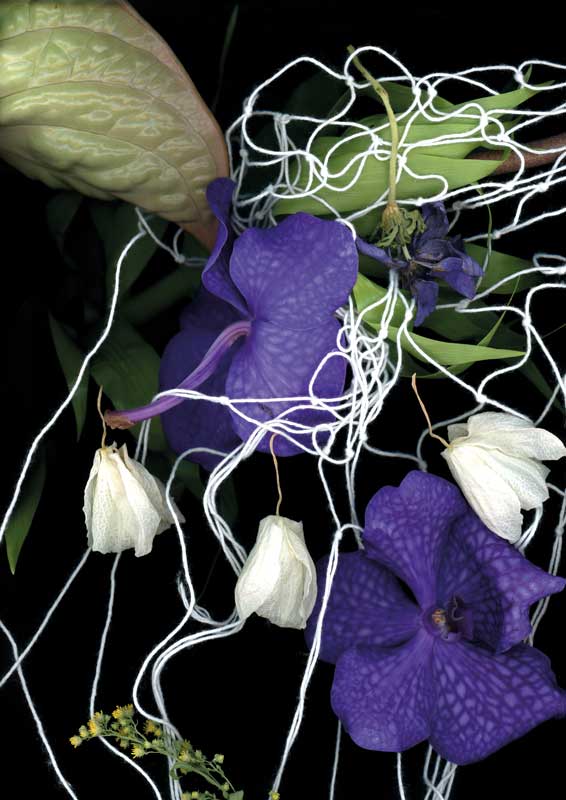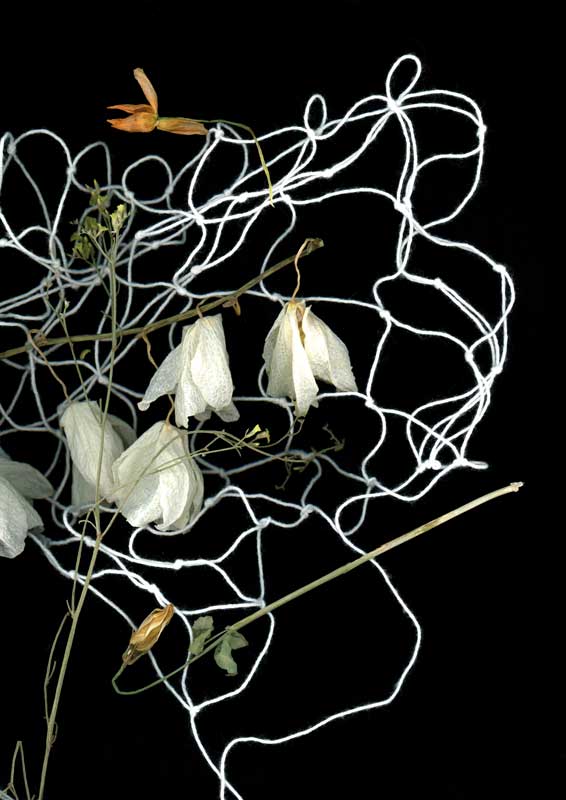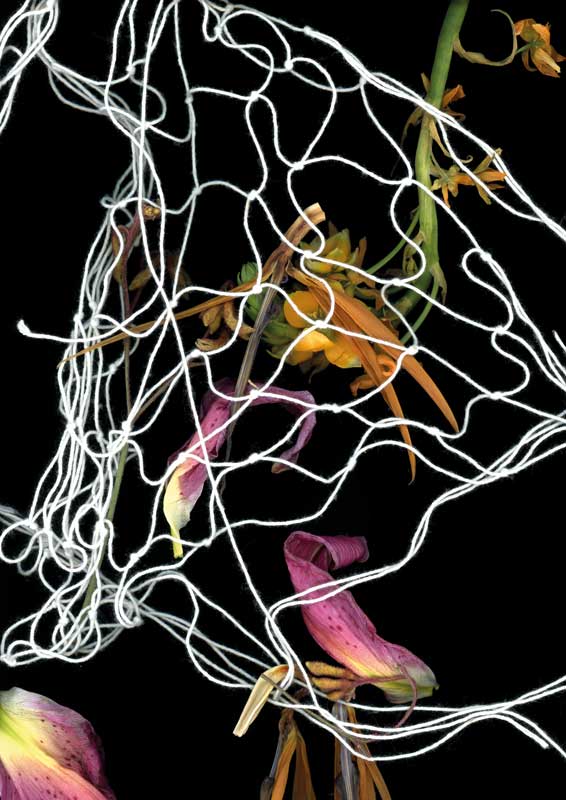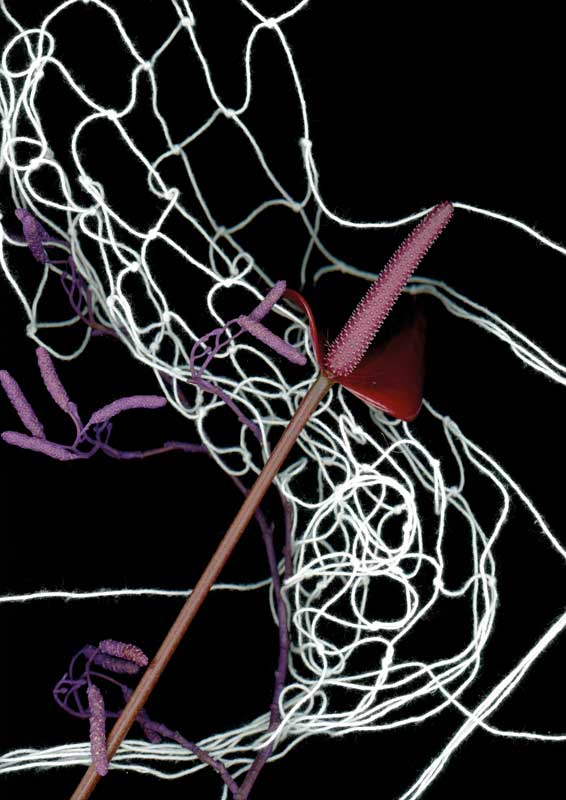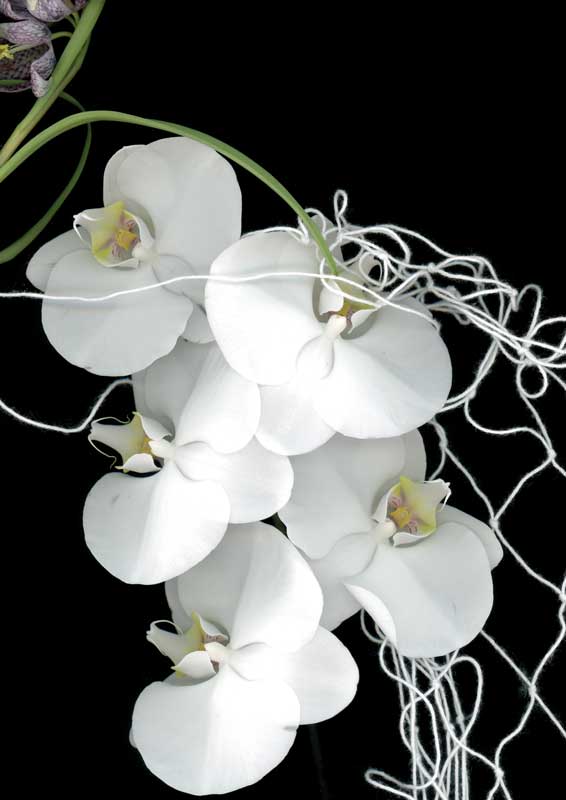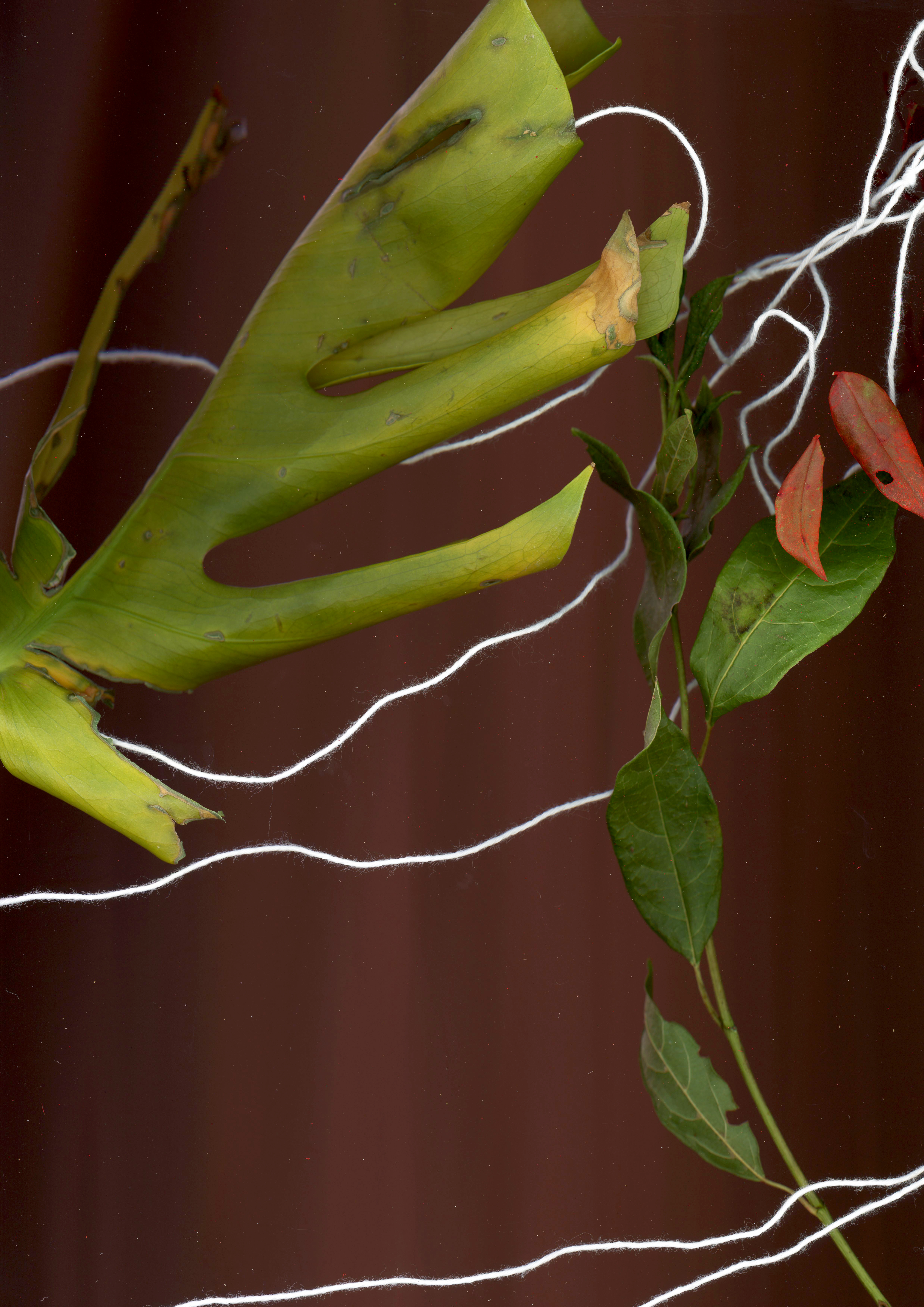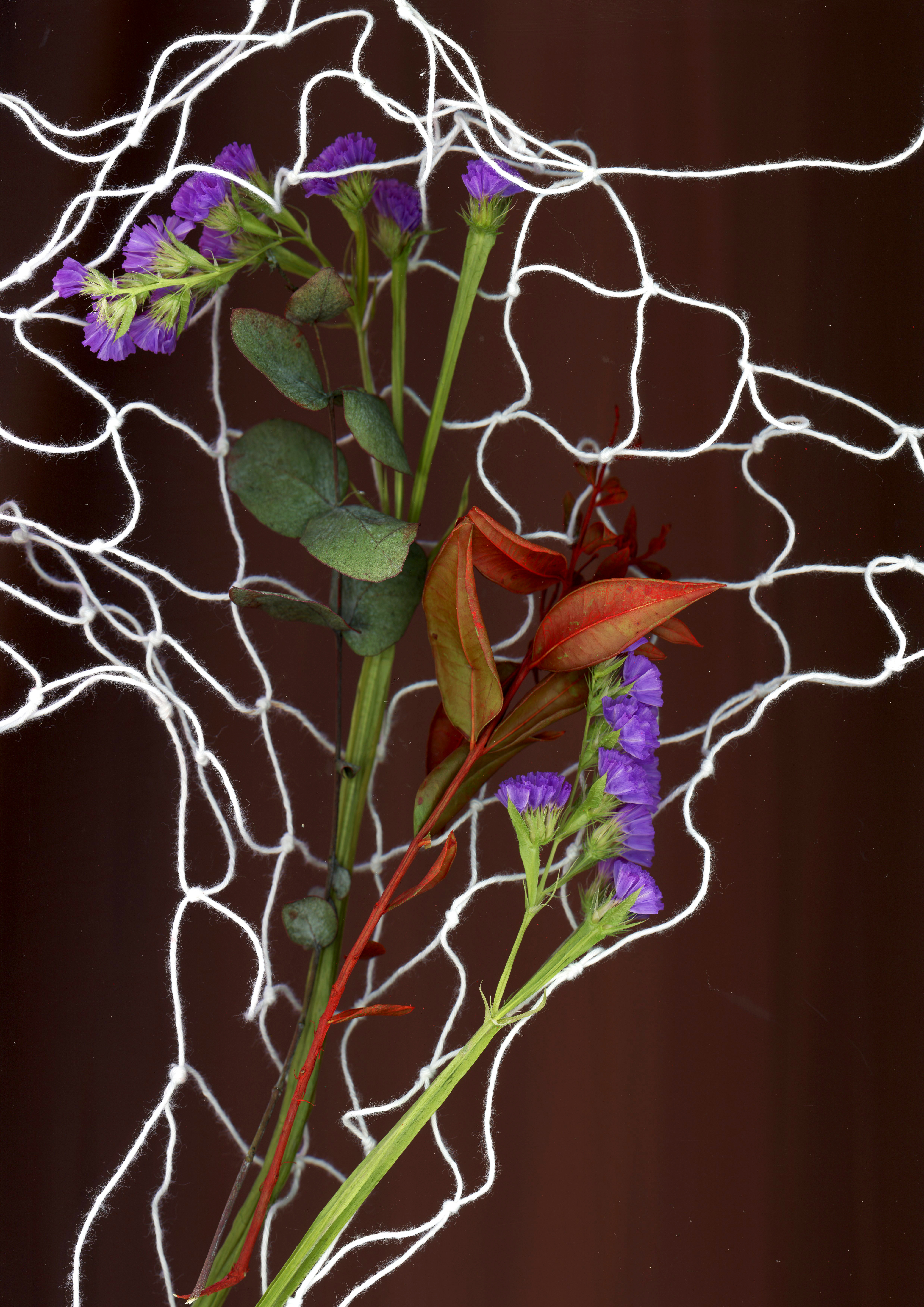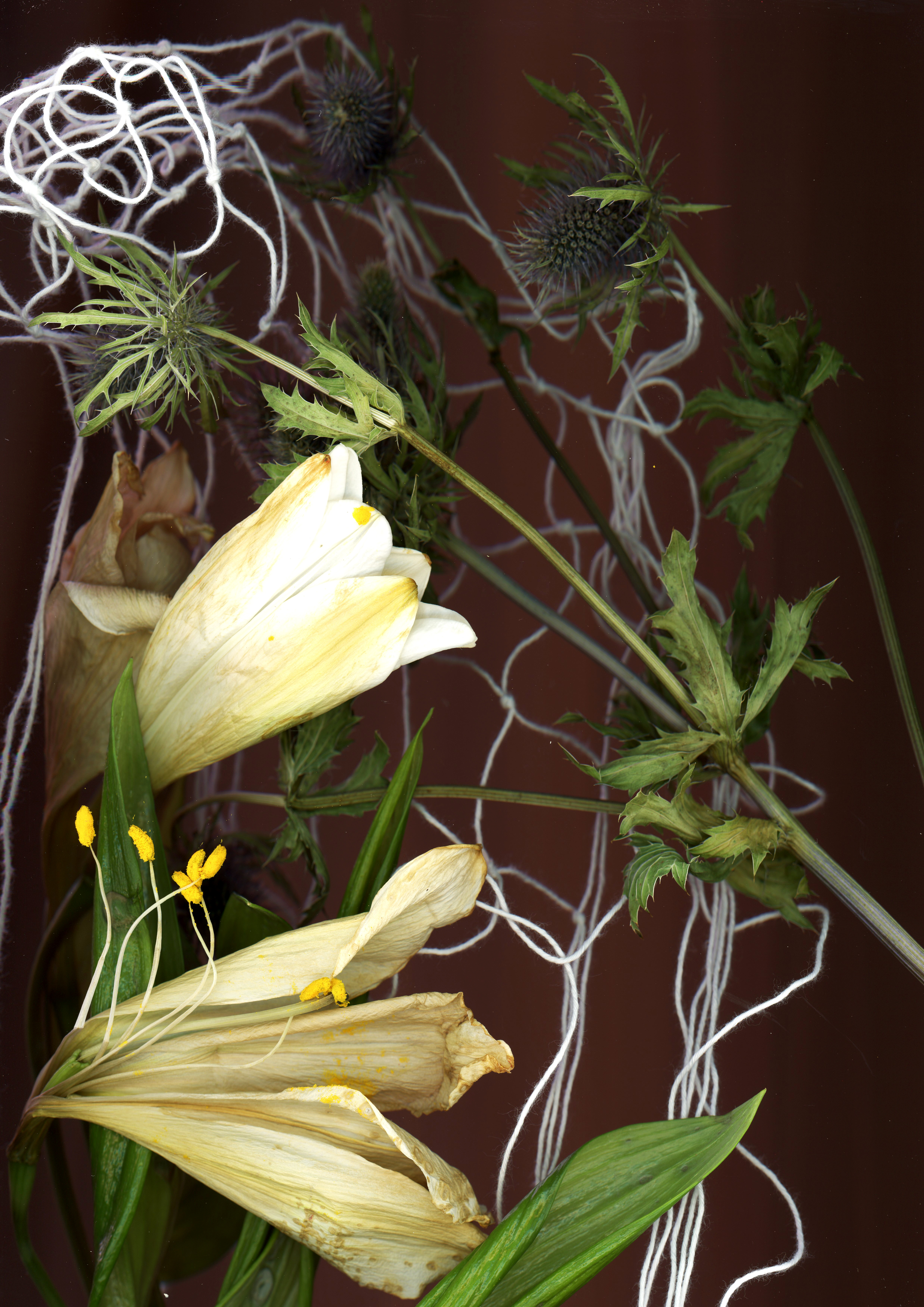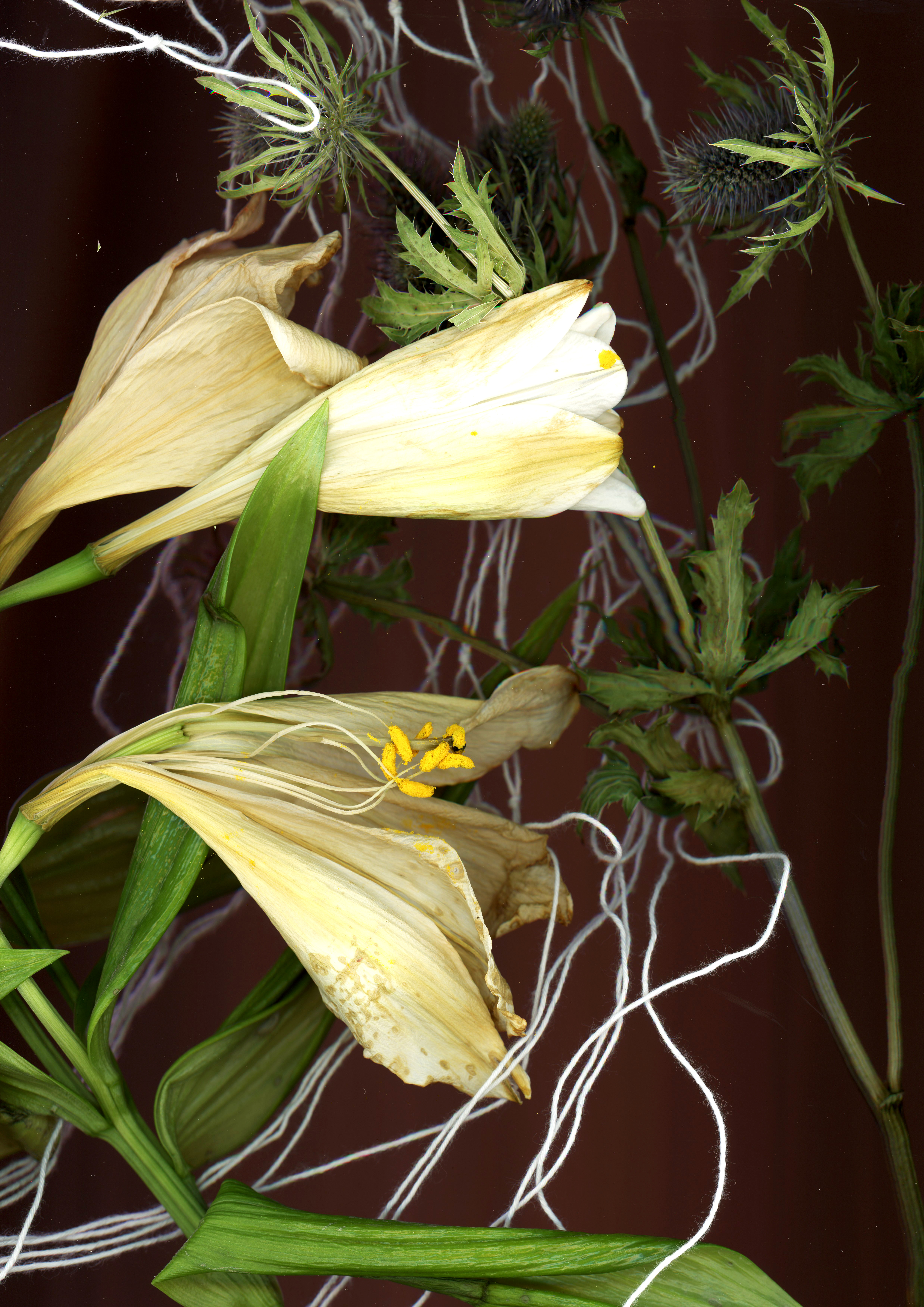Dunkle Paarung (i, ii)
„Der postkoloniale Blick ist der Blick der Empathie und des Verstehenwollens; (…) der postkoloniale Blick erkennt und anerkennt hybride Kulturen und Identitäten.“ (Paul Michael Lützeler)
Diese (An-)Erkennung des Hybriden sowie der Entwicklung kolonialer Kulturen und Geschichte thematisiert T. Lauw in Dunkle Paarung (i) im Verflechten der Pflanzen im feinmaschigen Netz. Bilder kultureller Einschreibung und Überlagerung entstehen gerade in der Unmöglichkeit die Materialien zu entwirren. Das Netz ist nicht mehr allein Symbol der Gefangennahme, sondern wird zum Träger des Anderen. Gleichzeitig behält es gerade durch diese Funktion der Tragfläche seine dominante Stellung: Das Netz bestimmt nicht nur Formation und Anordnung der einzelnen Blumen, auch entscheidet es über ein Davor und Dahinter, ein Außen und Innen: es wird zum Grenzort. In Dunkle Paarung (ii) verschwindet diese offensichtliche Oberhand zugunsten einer feinen Verflechtung der Materialien. Statt Draht haben wir es nun mit verknotetem Garn zutun, welches mit den Pflanzen ein gemeinsames Netzgeflecht knüpft. Obgleich der poetisch-visuellen Sprache, wird die Brutalität kolonialer Herrschaft zur roten Linie der Arbeiten T. Lauws. Durch das Verwenden exotischer Pflanzen, wird das Herrschaftsstreben kolonialer Mächte gegenüber indigener Kulturen kritisch beleuchtet. Die Faszination des Exotischen hat eine lange Geschichte und entwickelte sich aus einem extrem hierarchischen Verständnis gegenüber dem „Fremden“ anderer Kontinente . Das Sammeln „exotischer“ Pflanzen gehörte zum Instrument von Kolonialisierungsprozessen und lässt sich selbst als Akt kultureller Aneignung (des Exotischen) deuten. Gerade durch das Aufeinanderaufbauen der Arbeiten formuliert T. Lauw das Aneignen und Auferlegen des Kulturellen als eine prozessualen Entwicklung, deren Spuren und Erinnerungen bis heute und darüber hinaus Identitäten formen.
Lynn Busch
en
Dark pairing (i, ii)
“The postcolonial view is the view of empathy and the desire to understand; (…) The postcolonial view recognizes and recognizes hybrid cultures and identities. ”(Paul Michael Lützeler)
This recognition of the hybrid as well as the development of colonial cultures and history is the theme of T. Lauw in Dark pairing (i) by interweaving plants in a fine-meshed network. Images of cultural inscription and overlay arise precisely from the impossibility of unraveling the materials. The net is no longer just a symbol of capture, but becomes the carrier of the other. At the same time, it is precisely through this function of the wing that it maintains its dominant position: the network not only determines the formation and arrangement of the individual flowers, it also decides what is in front and behind, an outside and an inside: it becomes a border location. In dark pairing (ii) this obvious upper hand disappears in favor of a fine interweaving of the materials. Instead of wire, we are now dealing with knotted yarn, which forms a common network with the plants. Despite the poetic-visual language, the brutality of colonial rule becomes the red line of T. Lauw's works. By using exotic plants, the striving for rule by colonial powers over indigenous cultures is critically examined. The fascination of the exotic has a long history and developed from an extremely hierarchical understanding of the "foreign" of other continents. Collecting “exotic” plants was part of the process of colonization and can be interpreted as an act of cultural appropriation (of the exotic). By building up the works, T. Lauw formulates the appropriation and imposition of the cultural as a processual development, the traces and memories of which form identities to this day and beyond.
